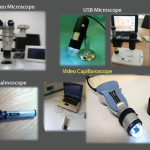One salient point of agreement: Members of both teams pointed to different kinds of evidence that MCTD is often misdiagnosed. MCTD is often conflated with undifferentiated connective tissue disease (UCTD), a condition in which symptoms and lab results suggest some sort of connective tissue disease, but not quite enough to meet diagnostic criteria for an established rheumatic illness.
CTD Heterogeneity & Overlapping Syndromes
Ever since Dr. Sharp’s initial description, some in the rheumatology community have questioned the validity of the disease category.
Dr. Izmirly argued that patients with MCTD would be better classified as either having an already defined autoimmune disease (e.g., systemic sclerosis, SLE or an inflammatory myositis) or two more or more overlapping diseases. Or, in some cases, they might not yet qualify for any such diagnosis, but should be thought of as having an intermediary, prodromal phase stage that may eventually develop into disease that is more easily characterized, but is not yet a distinct disease entity.
In contrast, Dr. Christopher-Stine contended that although it is true that a subgroup of patients may eventually evolve into a phenotype better described as a different connective tissue disease, MCTD still deserves to be characterized as a distinct clinical entity.
Dr. Izmirly shared data that a significant percentage of MCTD patients also meet criteria for SLE, systemic sclerosis or inflammatory myositis, and suggested that they might be better characterized as having one of these other illnesses. He also noted the highly overlapping nature of the classification criteria for MCTD with both SLE and systemic sclerosis classification criteria. Moreover, when patients diagnosed with MCTD are followed past five years, their chances of qualifying for one of these other illnesses increases.8-10
Yet CTD categories in rheumatology are inherently somewhat imperfect and heterogeneous, a point argued by Dr. Distler in support of MCTD as a distinct clinical entity. “We try to group patients into categories to make them as similar as possible to call them a disease, but there was never the aim to have a super unique phenotype with only once clinical presentation,” he said. “These diseases are very heterogeneous clinically, molecularly and in their outcomes.”

Dr. Distler
Dr. Distler also noted that most classification criteria clearly state that they are not meant to apply to patients in whom another disease might better explain their clinical presentation, for instance, systemic sclerosis. Just because a patient might technically qualify for more than one category of rheumatic disease does not necessarily imply that the disease category (e.g., MCTD) has no clinical or research utility.

